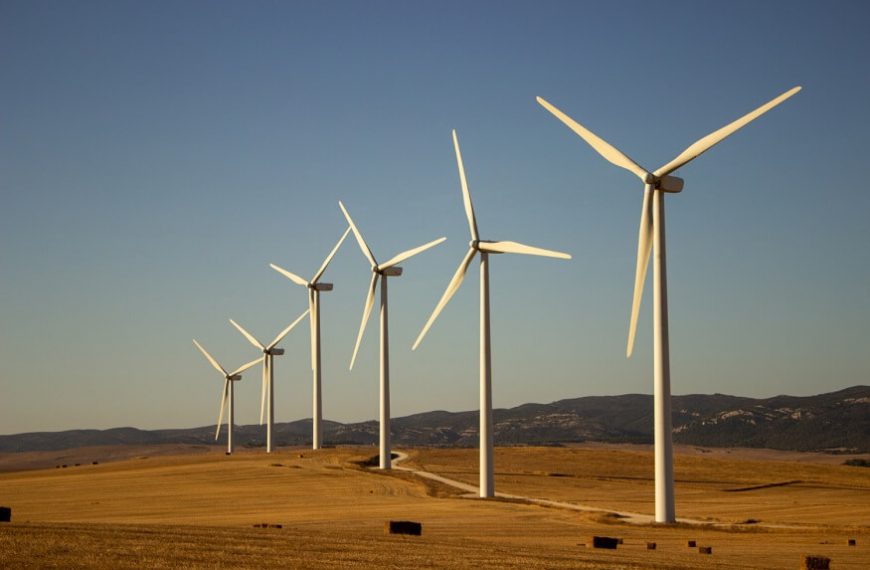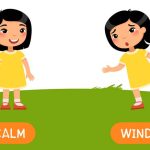The Little Pleasures in life are the Biggest of them all.
Like, the joy of a cool breeze in the midst of a morning walk in the woods.
There’s something magical about Wind. A force we cannot see, yet one that makes its presence felt in our lives in an inexplicable manner. However, there’s far more to wind than merely gracing us with its presence every now and then. In the background, it is silently at work, helping us harness energy.
As climate change becomes a real threat in these times, countries all over the world are looking to use Renewable Energy. And what might one of the fastest growing sources of renewable energy be?
Wind Energy, of course!
In this article we will pursue everything from the advantages of wind energy, to its disadvantages. But first, a closer look at what Wind Energy is really all about.
What Wind Energy Is: A Closer Look
Wind energy can be defined as the process of capturing Kinetic Energy from wind, and converting it into Electricity or Usable Mechanical Power.
As governments across the world move away from their reliance on Fossil Fuels, alternative energy sources like Wind Energy are set to become key to the global power supply. In fact, Wind Energy is the second largest source of global renewable energy production, next only to hydroelectric power.
Cool Fact: Wind Energy is actually categorized as a form of Solar Power, since it is generated as a result of the passage of air relative to the surface of the Earth.
The Types of Wind Energy
The following are the three different types of Wind Energy:
- Utility-Scale. This refers to wind turbines that range in size from 100 kilowatts to several megawatts. Here, electricity is supplied to the power grid and distributed to the end user by power operators.
- Offshore. These are wind turbines that are erected in large water bodies. They are generally able to generate more power, as they are larger than onshore turbines.
- Distributed. This pertains to wind turbines below 100 kilowatts. They are used to directly power a home or small business that is not connected to the grid.
The Advantages of Wind Energy
Here are some of the pros where it comes to using Wind Energy. An Energy that seems to be taking the world by Storm these days!
1. Excellent for Remote Areas
The best part about Wind Energy is, it can even be exploited in places where there is no connection to major Electricity Grids. Thus, unlike hydroelectric power, Wind Energy can be exploited on a global scale.
2. Clean Energy
Wind does not emit greenhouse gasses while generating electricity. When we burn less fossil fuel for energy and replace it with clean, renewable energy, it helps to reduce our Carbon Footprint.
3. Advances in Technology
One of the best advantages of Wind Energy, lies in the fact that it is backed by several significant advances in Technology. There are now wind turbines that are available in a whole host of sizes, which has increased the market to be used by several businesses and homeowners, too. Further advancement in technology will only result in creating designs that will create more electricity, require less maintenance, and run more safely.
4. Zero Fuel Requirement
One thing about wind turbines is, they are exclusively powered by Wind Energy. They have no requirement for fuel or any kind of electrical connection. This helps lower the operating costs, as compared to other renewable energy sources that might need some energy investment.
5. It is Getting Cheaper
The huge surge in the use of Wind Energy over the last several years, has seen a whopping 70 percent drop in overall costs over the last decade. While wind turbines might still come with a far-from-modest price tag, once erected they are still one of the most cost-effective sources of electricity available.
6. Minimum land Requirement
Even though they are installed on land, wind turbines don’t take up all that much space. Moreover, the blades extend vertically and what’s more, the size at the base is practically negligible.
7. The Creation Of Jobs
On account of wind turbines becoming increasingly economically feasible, there has been a surge in jobs across the world, in the Wind Energy Sector.
Disadvantages of Wind Energy
Now that we have seen the pros, a look at the cons of Wind Energy.
1. Ideal Wind Sites are mostly in Remote Places
There are installation challenges that need to be overcome, in order to bring that energy from Wind Farms to Urban Areas.
2. Wind Turbines can be dangerous to Wildlife
One of the prime disadvantages of Wind Energy, is the threat it poses to Wildlife. Besides the more obvious danger of birds colliding with them, those turbines can even interfere with bat sonar navigation.
3. They are Noisy
You don’t want your residence located near a Wind Turbine. The noise from them hampers the quality of living of nearby residents. This is on account of the ‘whooshing’ sound the turbine blades produce as they move through the air, as well as the mechanical hum that the generator inside the turbine emits.
4. It is Intermittent
Needless to say, the effectiveness of a wind turbine in producing energy depends on the weather. That is exactly why it becomes extremely difficult to predict how much energy a wind turbine will produce over time. If the wind speed is too low on a given day, that turbine just won’t spin.
5. High Upfront Cost
As we have seen earlier, Wind Energy proves cheaper in the long run. However, the upfront cost of installing a Wind Turbine is extremely high. Further, there might be the added cost of investment in underground lines, to send power to more populated areas.
At EuroKids, we believe that Wind Energy should certainly be considered an option where it comes to looking for renewable sources of energy. After all, not only is wind an inexhaustible resource, it also helps us generate electricity without burning any fuel or polluting the air.
















